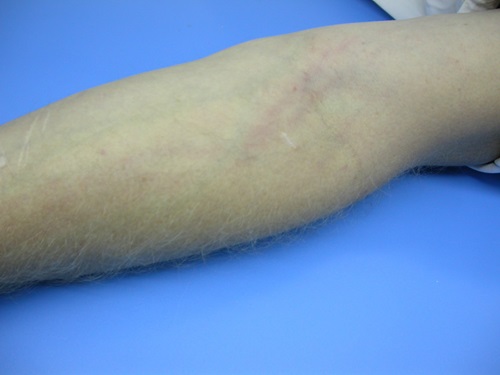3/25/2022:
Erysipelas is a zoonosis that for many years has been associated as an occupational hazard in people working in animal husbandry and in the meat and fish processing industries. In our monitoring reports, we a have seen an increasing number of cases in chickens, and in particular in free-ranging layers, in recent years.
The Erysipelothrix rhusiopathiae bacteria, which cause erysipelas, are generally found in the surrounding area of an infected farm and are extremely resistant to environmental and chemical influences. Survival periods in the ground vary from 40 days to a number of years, according to various sources. This is determined in part by the temperature and acidity of the soil.
Although erysipelas is particularly known in swine and sheep, the bacteria can also result in high losses in poultry. In the acute form, an erysipelas infection can result in septicaemia within 2 to 5 days. During autopsy, the severely swollen liver and spleen are particularly noticeable. There will be a significant production drop in egg producing birds.
On assessing the monitoring results of the past decades, outbreaks of erysipelas in poultry are shown to mainly occur during the autumn months and in early winter, in both free-range birds as in aviaries or slat houses. This time period corresponds with the harvesting of possible food sources of (brown) rats and mice. Pests are frequently mentioned in the description of how the bacteria were introduced. It seems likely that they bring the bacteria in the house when seeking shelter in the poultry houses. Chickens can pick up the bacteria from the pest faeces, and further spread is caused by picking and cannibalism of animals that have died of septicaemia.The infection is proven difficult to eradicate from a farm due to infected blood lice, rats and mice and the resistance of the bacteria. The advice is therefore that pest control be optimised during the autumn, and possibly even intensified when necessary. The advice for farms that have been infected in an earlier period of time: intensify monitoring of both pest control and blood lice control, along with vaccination of at least 3 consecutive years of flocks. The bacteria can survive at length in the ground, and the above period of vaccination may therefore not be long enough at free-ranging farms.
Anyone who scratches themselves by sharp bone fragments during internal inspection of erysipelas infected animals may become infected. This will result in a skin rash, inflammation of the lymphatic vessels and the lymph nodes. Eventually, this may result in septicaemia. If present seek medical attention immediately. In case of infection, the skin will become swollen, with blue-red discolouration, and is extremely painful. This will also be seen on other parts of the body if the infection spreads to the lymph nodes. Antibiotics offer effective treatment for the infection.

Photo 1: Red, inflamed and swollen thumb of a patient

Photo 2: Clearly inflamed lymph vessels of a patient